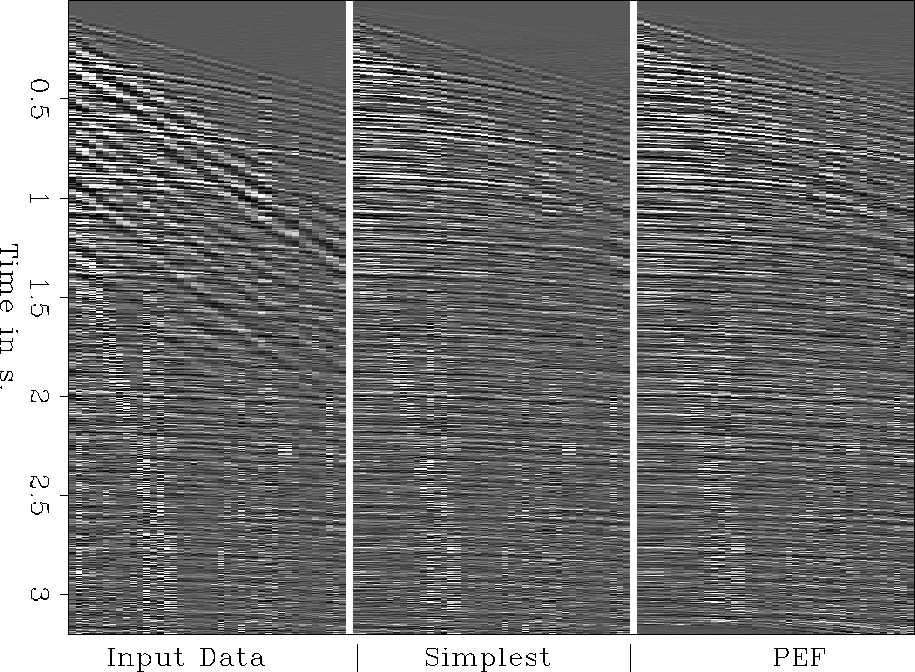 |
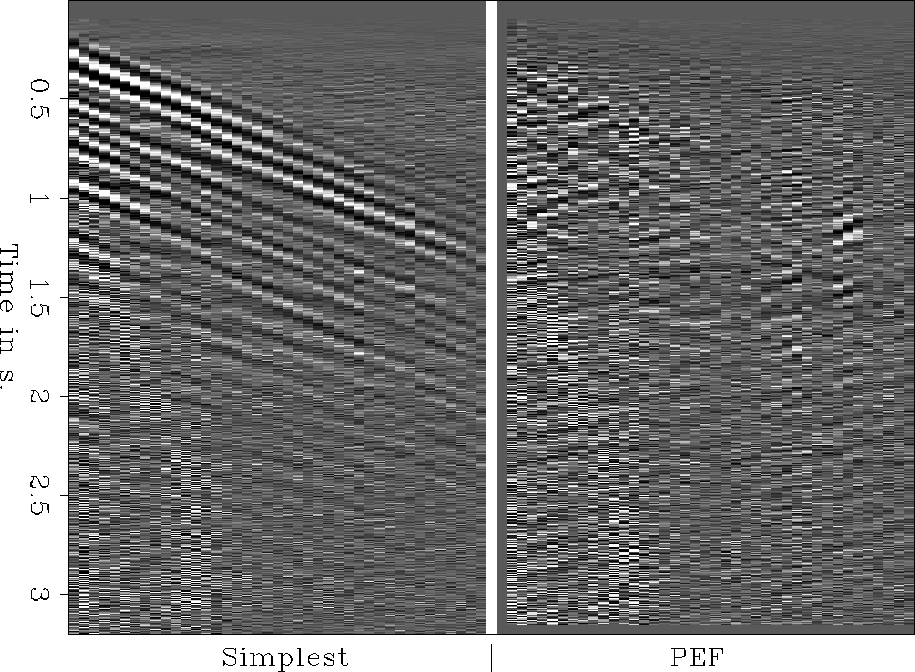 |
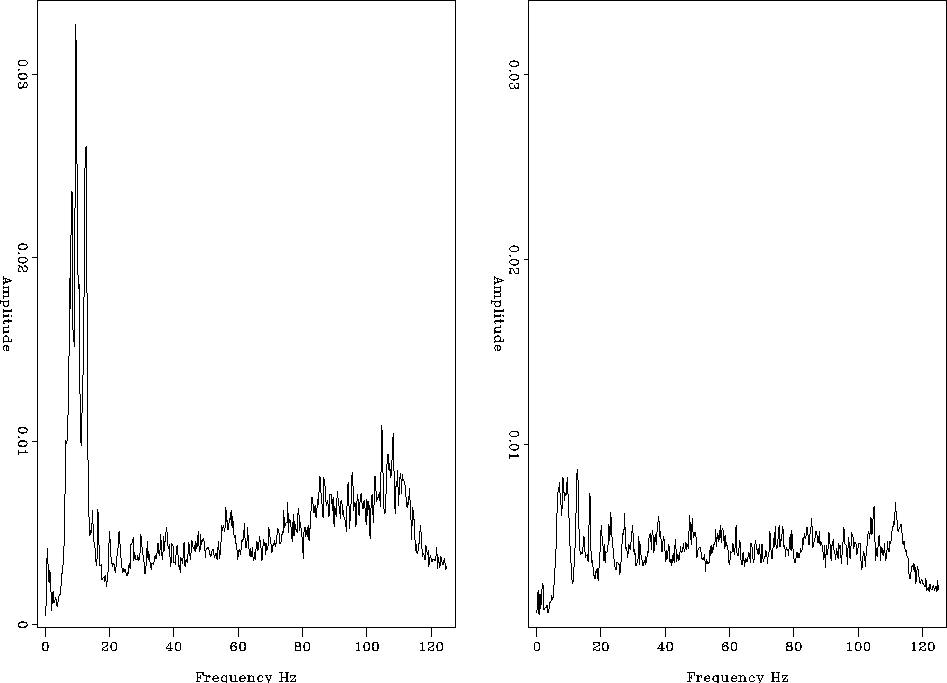 |
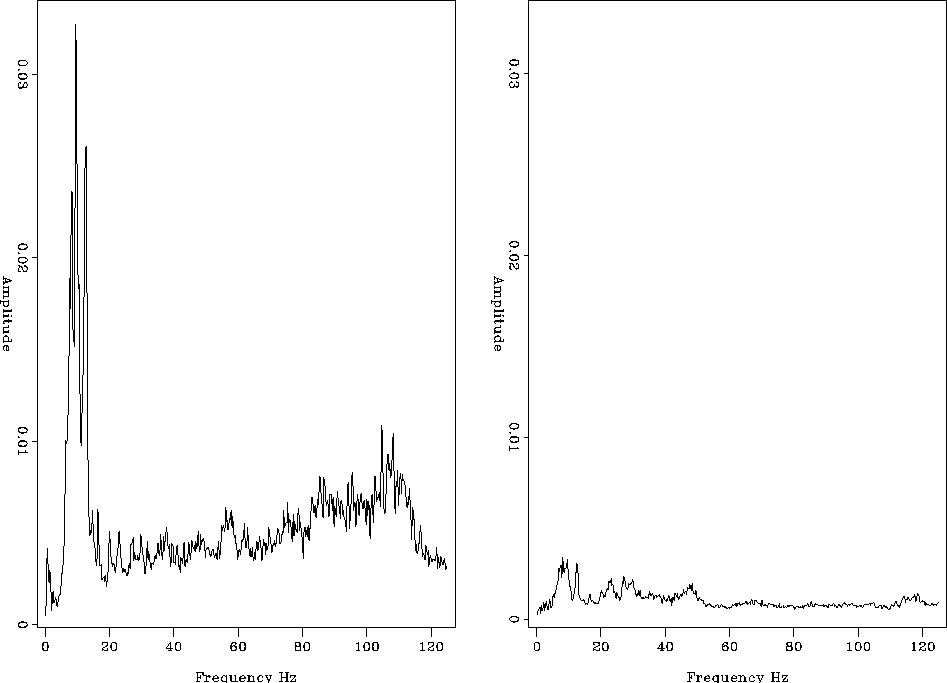 |
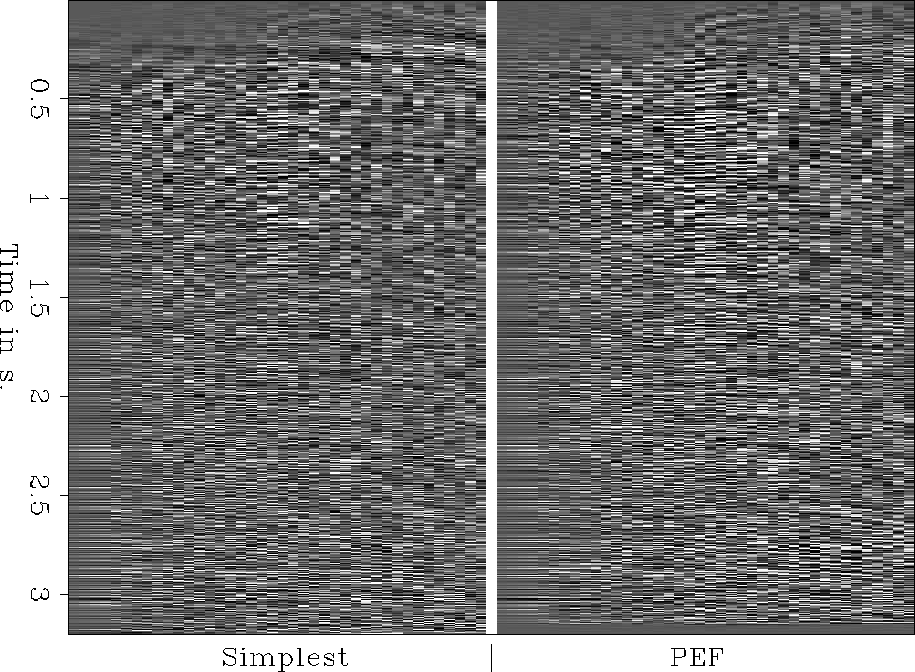 |
|
impulseF Figure 7 Filtering method. Convolution of noise with one of the inverse PEF estimated during the iterations. The coherent noise appears (dipping events). |  |
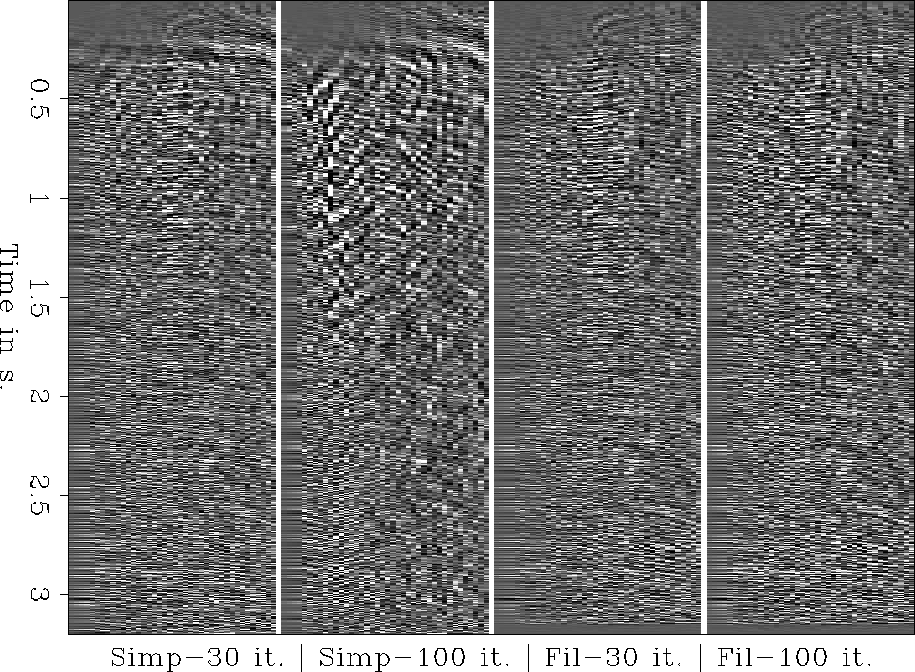 |
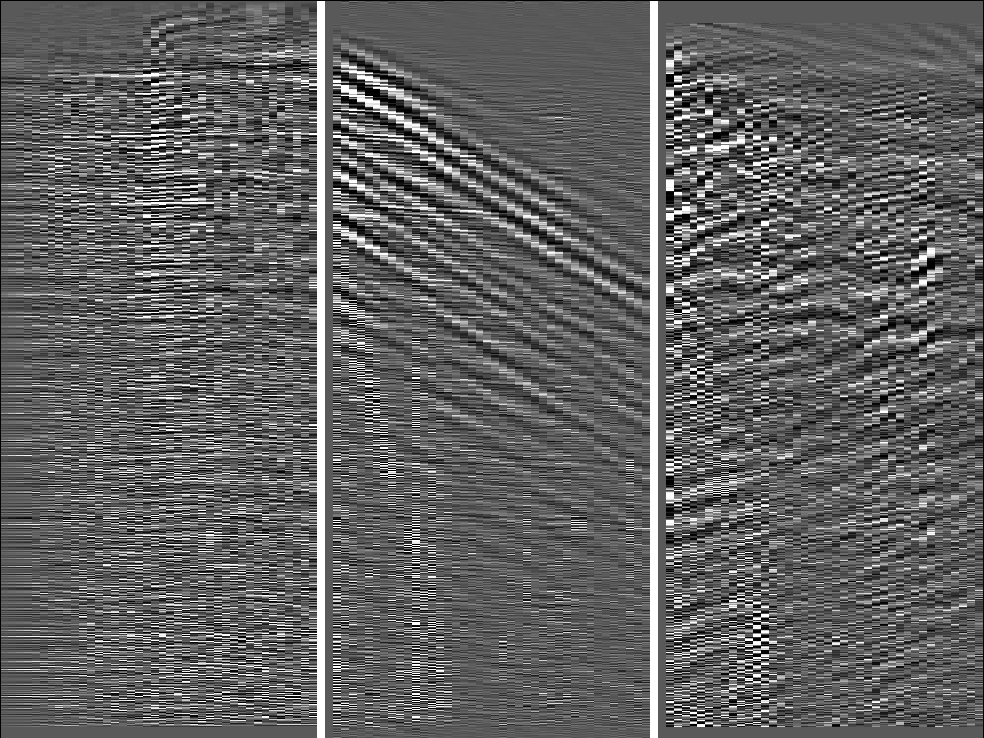 |
|
impulseS Figure 10 Subtraction method. Convolution of noise with the inverse PEF estimated from the data and used as the coherent noise PEF. Notice that both signal (straight lines) and noise (dipping events) are predictable, causing crosstalks with the hyperbolic Radon transform. | 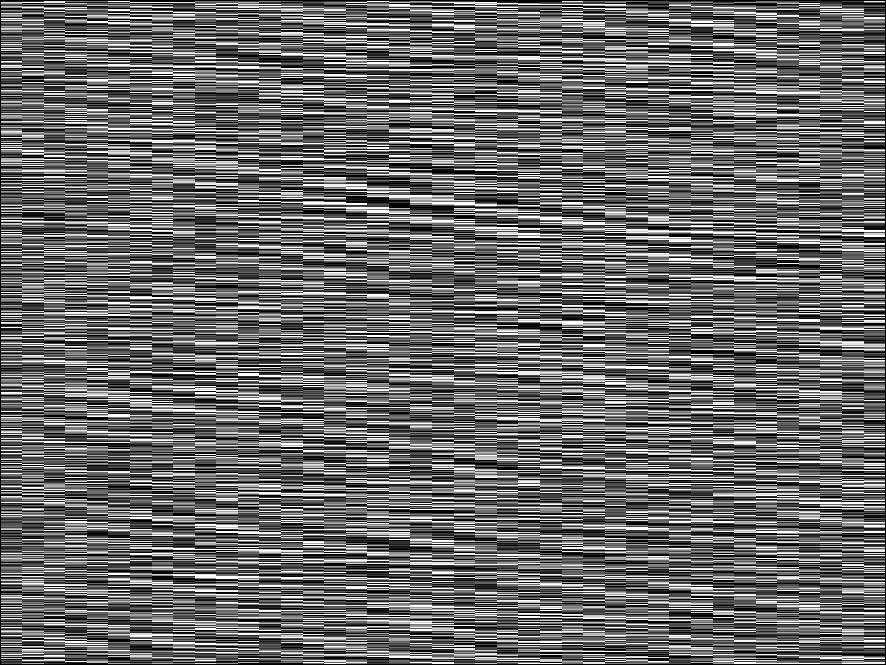 |
|
compiterS Figure 11 Convergence of the two proposed methods along with the convergence of the ``simplest'' scheme. | 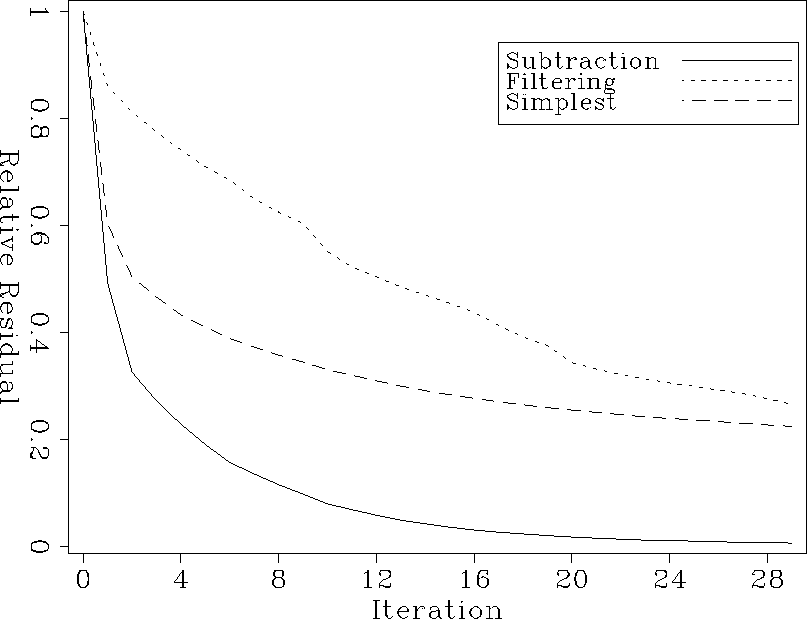 |
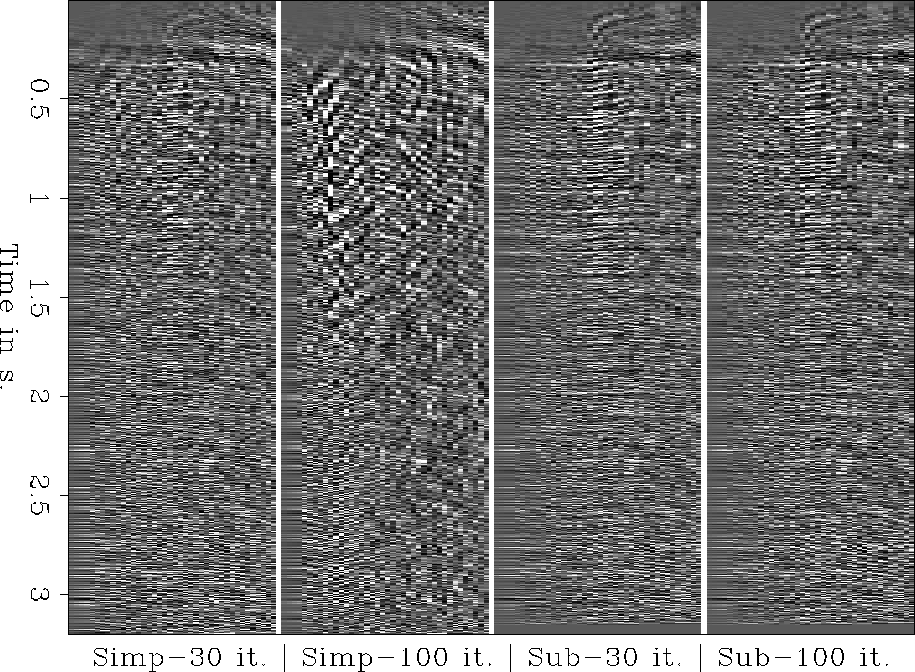 |
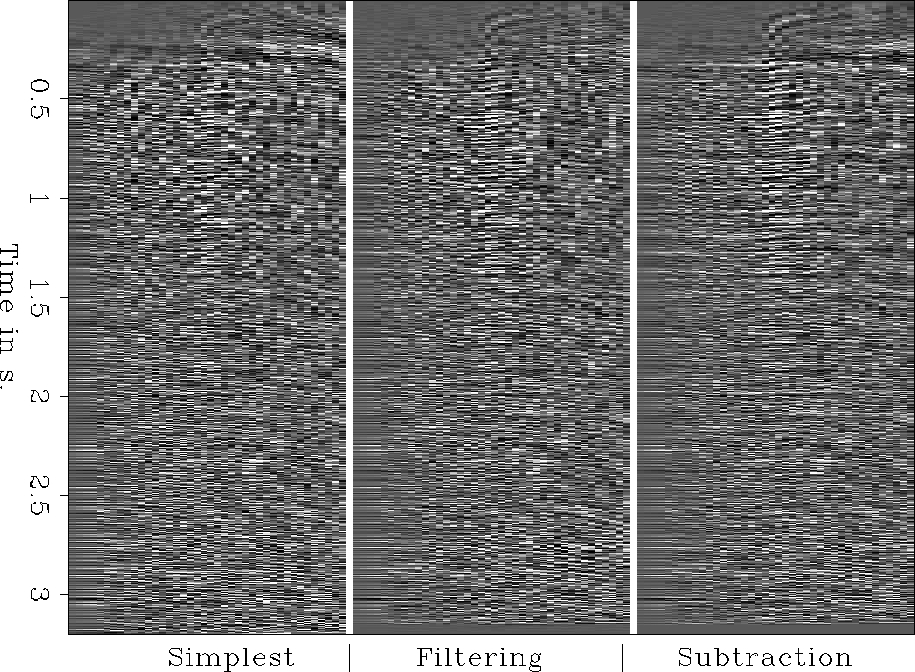 |